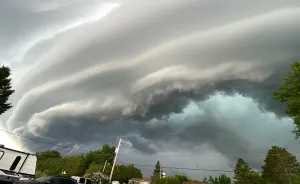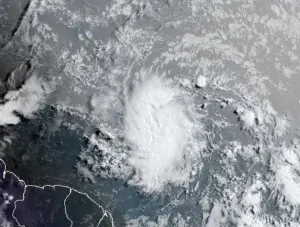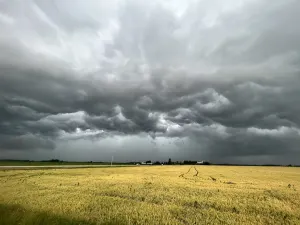
Ontario: Nature's snowmaking cannons put on a show
Lake-effect snow is a fact of life in Ontario in the winter, but a recent event showcased the snow-making power of a trio of small lakes in the north.
December 10th provided a rare look at lake-effect snow off of a group of small, northern Ontario lakes, while the Great Lakes remained dormant. Why?
The three lakes of focus are Lake Panache, Lake Temagami and Wanapitei Lake. None of these lakes are even a quarter the size of the largest inland lake in the region, Lake Nipissing, but that wasn’t producing any lake-effect.

As temperatures dropped to -20°C by Tuesday morning, the trio of lakes were emitting as much heat as they could muster.
Lakes will continue to emit warmth until they freeze, but deeper lakes continue to draw warmth from the depths. This happens sooner for Lake Nipissing due to its relatively large area and shallow depth. By comparing the depth to the surface area, you can get a representation of how much area is responsible for cooling each meter of water.
While Panache, Temagami, and Wanapitei have depths of 55 metres, 109 metres and 142 metres respectively, Nipissing is only 64 metres deep. You would expect Nipissing to be comparable to Panache, but when comparing surface area, there's a stark difference: Nipissing's surface area is 870 km², more than four times that of Lake Temagami.
To represent the rate at which the lakes can cool, examining the surface-area-to-depth ratio is a great method.

The deepest part of a lake takes much longer to heat in the summer and, conversely, to cool in the winter. This ensures supply of warmer water to the surface into mid-winter, while lingering cooler water keeping swimmers at bay well into the summer.
The surface-area-to-depth ratios for Wanapitei, Panache, Temagami, and Nipissing are 1.3, 1.5, 1.9 and 13.6 km²/m respectively. The higher the number, the faster the lake will be able to cool and warm. This explains why Nipissing is already frozen and the smaller, deeper lakes remain open.










